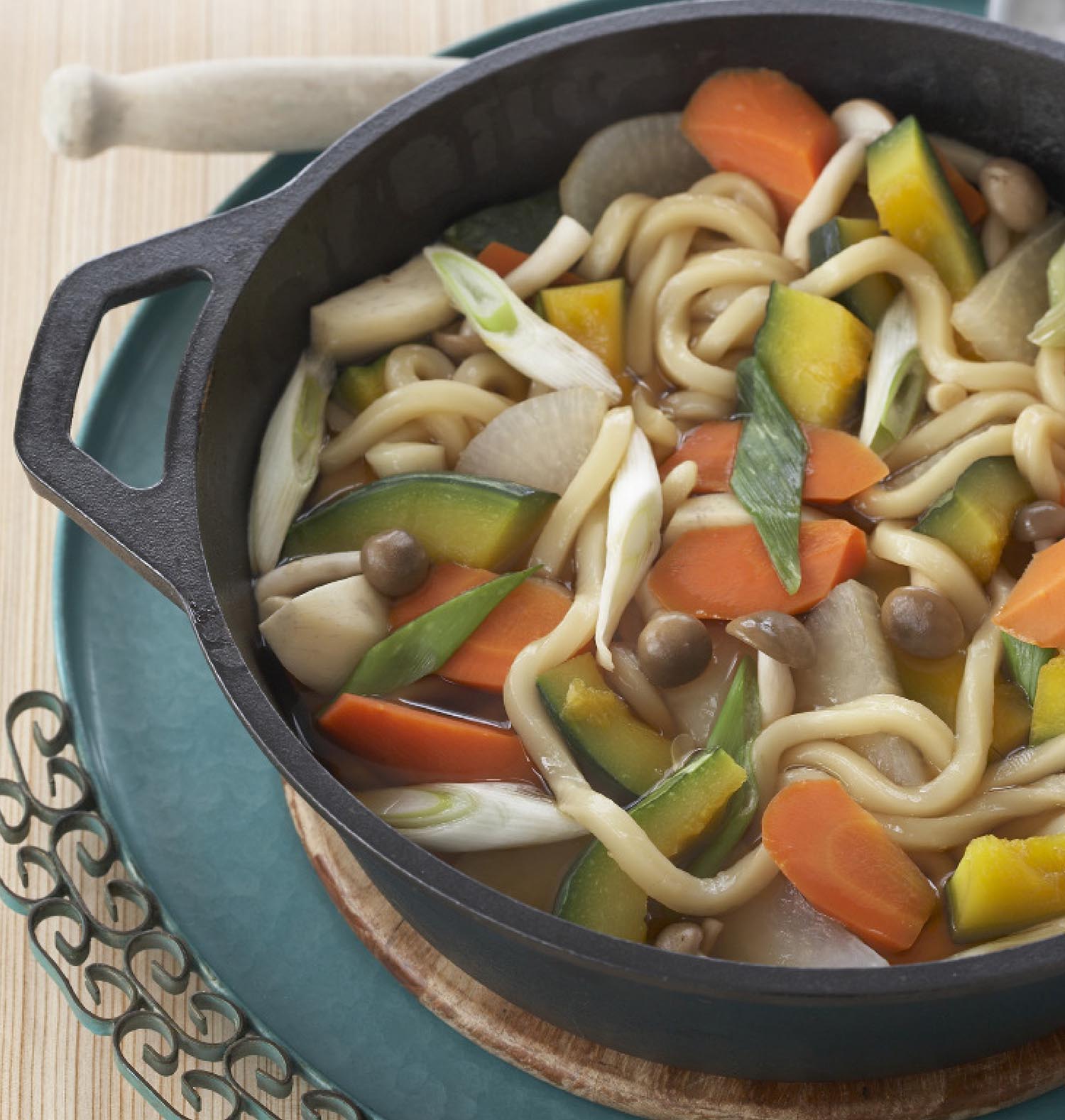Tadashi Ono and Harris Salat’s Tofu Hot Pot
They share the recipe for this dish that's typical of the monastic vegetarian cooking style known as ‘shojin ryori.’

Ten Speed Press
‘Kyoto, the former capital of Japan, is the birthplace of shojin ryori, the traditional vegetarian Buddhist cuisine consumed in the city’s many temples. Tofu is a pillar of this cuisine and, to this day, artisanal manufacturers in Kyoto make it every morning before dawn. Tofu stew is a classic dish in this city, especially in winter’, reads the introduction to this hot pot recipe, taken from the book Japanese Hot Pots, co-written by culinary journalist Harris Salat and Japanese chef and author Tadashi Ono.
The duo share a recipe put together especially for vegetarians, who will discover how to replace dashi, which contains fish, with a non-meat version, to respect the precepts of shojin ryori as far as possible.
Japanese Hot Pots showcases salty broths and ingredients that are both healthy and easy to find all over the world, like seafood, poultry, green vegetables, roots, mushrooms, and noodles. Cooked using classic utensils, they require very little preparation and no special equipment.
Harris Salat and Tadashi Ono have also written other cookbooks together, like Japanese Soul Cooking and The Japanese Grill.
Serves 4
Ingredients
For the warijoyu sauce
125 ml soy sauce
62.5 ml dashi
2 tablespoons mirin
—
2 pieces kombu (around 15 cm)
2 packs silken tofu, each cut into 6 blocks (packs of around 450 g)
120 g shiitake mushrooms (around 8 pieces), stems removed and caps cut in half
1 negi cut diagonally, in 5-cm pieces
120 g napa cabbage, sliced
2 l water
Shichimi togarashi, to season
120 g shibori scallions, to garnish
Method
To make the warijoyu sauce, combine the soy sauce, dashi, and mirin in a small saucepan and bring to the boil over a high heat. Remove from the heat and let cool to room temperature.
Place the kombu in the bottom of a saucepan and then carefully place the tofu on top, in the centre. Arrange the shiitake mushrooms, the negi, and the cabbage around the tofu. Add the 2 litres of water.
Cover the saucepan and bring to the boil over a medium heat. Reduce heat to low, remove the lid, and leave to simmer until the tofu is warmed through, for around 10 minutes. Monitor at regular intervals to make sure that the liquid doesn’t simmer too much, to avoid breaking the tofu.
Transfer the hot pot to the table. Serve the ingredients (without the stock) in small bowls, drizzle with warijoyu, and season with shichimi togarashi. Garnish with the scallions. Add more warijoyu if desired.
Suggested shime (accompanying dish): Zosui (rice soup). Add the remaining warijoyu and shibori scallions to the rice.
Japanese Hot Pots (2009) by Harris Salat and Tadashi Ono is published by Ten Speed Press.

Ten Speed Press
TRENDING
-
The Tattoos that Marked the Criminals of the Edo Period
Traditional tattoos were strong signifiers; murderers had head tattoos, while theft might result in an arm tattoo.

-
Paris, Tokyo: Robert Compagnon
With his co-chef and talented wife, Jessica Yang, Robert Compagnon opened one of the top new restaurants in Paris: Le Rigmarole.
 3:31
3:31 -
Chiharu Shiota, Red Threads of the Soul
Last year, more than 660,000 people visited the retrospective 'Chiharu Shiota: The Soul Trembles' exhibit at the Mori Art Museum.

-
‘Before Doubting Others, Doubt Yourself. Who Can Truly Say a Dish Isn’t What It Used to Be?’
In ‘A Non-Conformist’s Guide to Surviving Society’, author Satoshi Ogawa shares his strategies for navigating everyday life.

-
The Story of Sada Yacco, the Geisha who Bewitched Europe
Described by Dazed magazine as the first beauty influencer, she has been restored to her former glory since 2019.





